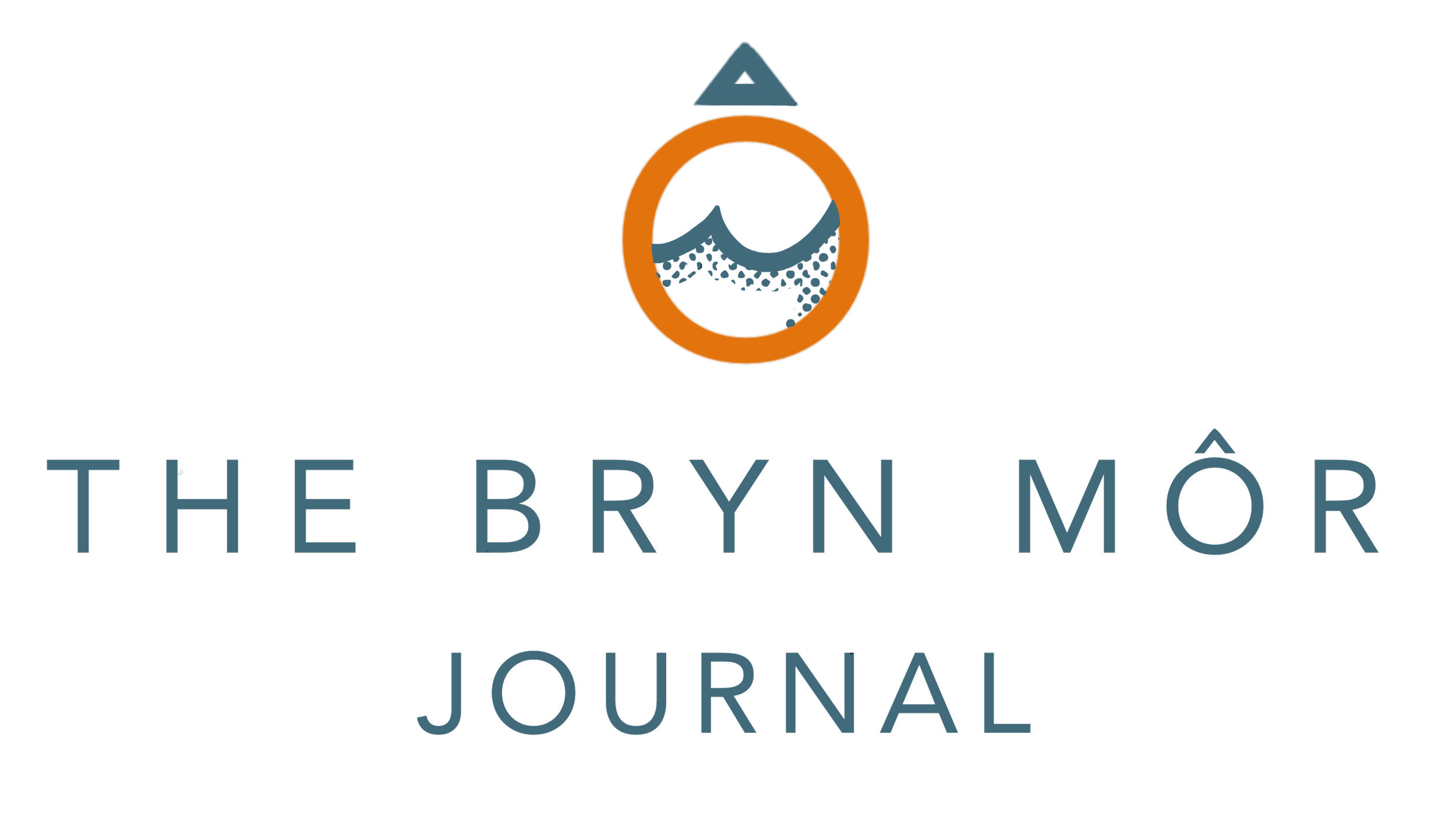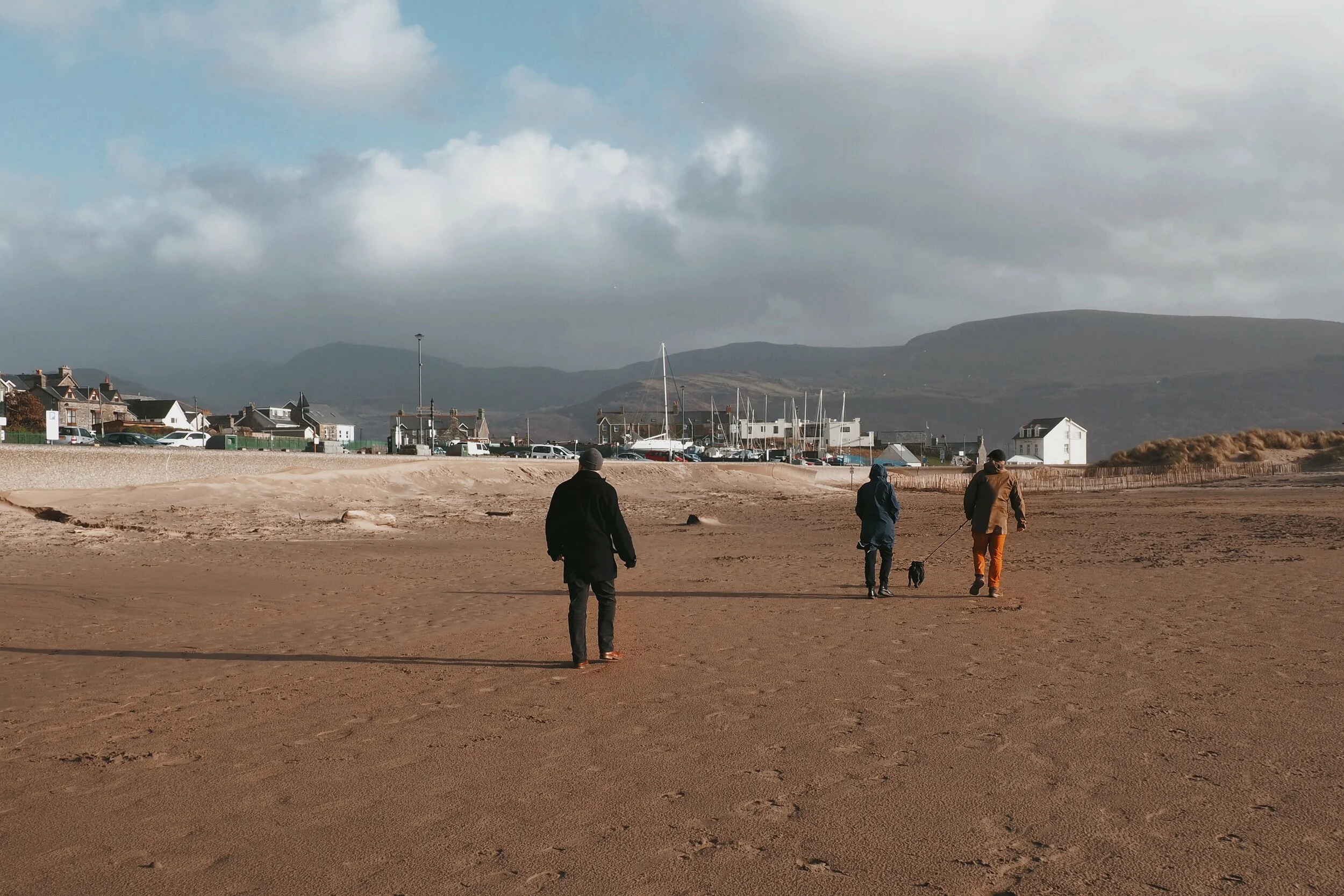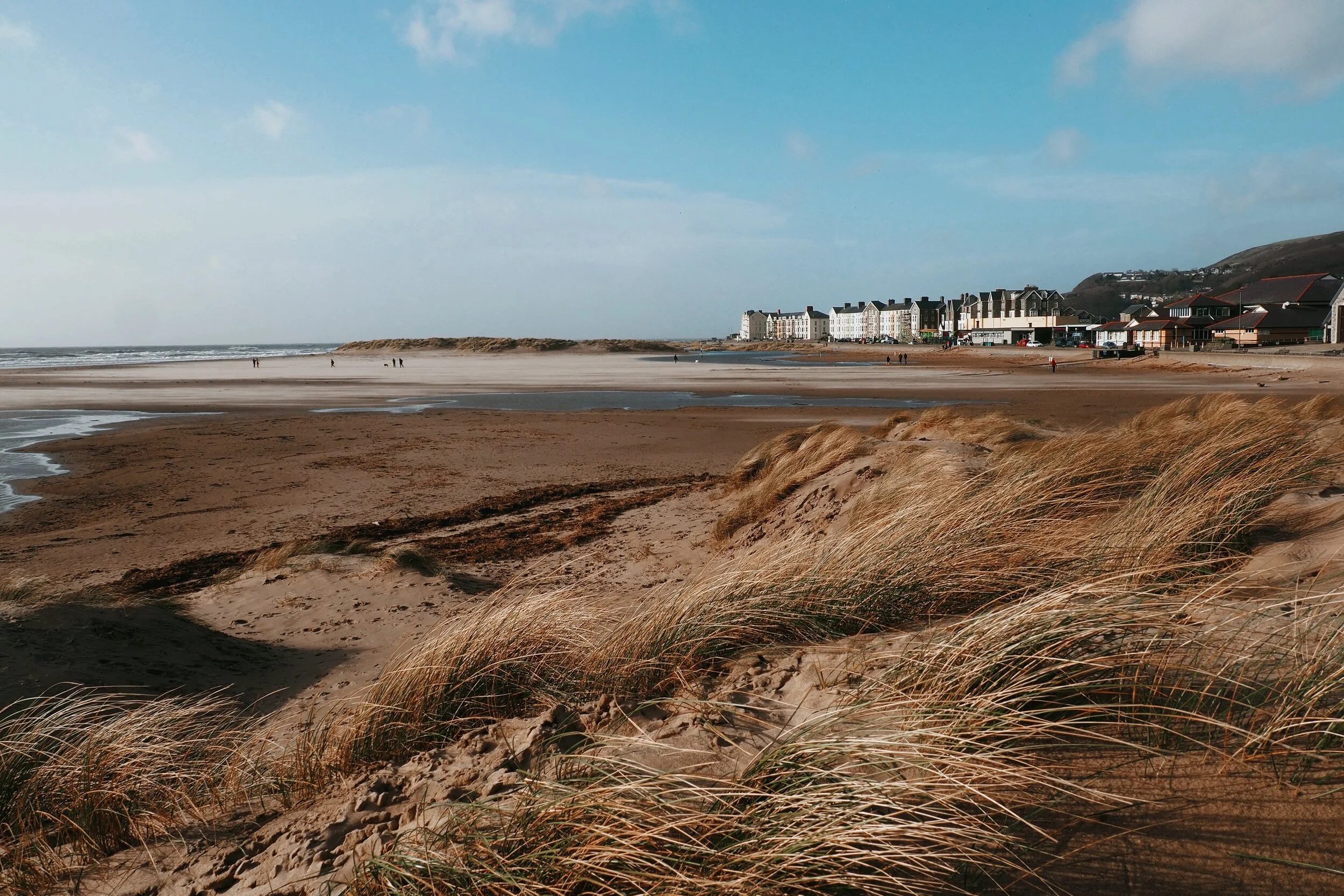Winter Beach Stories #3
We’ve been talking a lot recently about escaping to the beach during a British winter, and our latest seaside adventure includes a coastal road with views for miles, powerful rolling waves, dramatic cliffs, dunes with hidden houses, howling winds, sand clouds and flooded estuaries. As you can guess, we had one hell of a day!
We drove out of Porthmadog across the famous walled road called The Cob. Its jagged slate wall flicked and flashed past us as the high water in the Afon Glaslyn estuary looked as if it was about to breach the man made causeway’s walls at any point. The Ffestiniog Railway steam trains were above us on a higher section of the causeway, and with a dominating push they moved their way along the narrow gauge track. As we turned off the Cob the road widened and we turned right on a road signposted towards Harlech. The train moved away from us to take its journey to the slate hills and mountains of Snowdonia, a stark contrast to where we were heading to. As the road crossed a shared road and rail bridge over the brown, fast flowing waters of the Afon Dwyryd we looked forward to the journey that lay ahead of us. We had not ventured south of Porthmadog for a while so new sights and sounds were hopefully coming our way.
The road flowed through the wetlands of Morfa Harlech. The mountains of Foel Senigl & Moel Goedog were full of greens & oranges. Radiating their colour across the horizon, the ground was lush and full of life. On closer inspection though the soil was soaked with chestnut coloured water, like a terra-cotta ooze from a potters wheel. The roads gave off a spray of water from passing cars which stuck like a film to your windscreen, hard to wash off at times due to its tenacity and glue like stubbornness. The road began to climb as we approached Harlech; famous for its dominating castle which once hugged the coast but now sits inland due to land being claimed back from the sea. After a quick stop in the village, to use the toilets, we left the twisting streets and its high buildings and continued climbing up the road until we were driving right on the edge of the land.
The ocean was laid out before us like a rumpled up sheet of thin paper. The glimpses of the view we were getting as we drove looked epic, so we halted our journey to cross the road to give it our full attention. We found a grassy path lined with dormant fruit trees that headed towards the cliff top. Looking north we saw miles of sand dunes leading our eye to Harlech Point where the dunes widen and become the Morfa Harlech National Nature Reserve. The suns rays were bouncing off the golden drifts, making the grasses look so vibrant and animated. A house stood isolated in the landscape, looking serene and perfect with the yellow sands surrounding it like a fortress. The wind was punishing and brutal, picking up the sand from 50 metres below and filling the air with clouds of dust, looking like cinders from a fire in the sky. The beach curved around the bay with waves rolling onto it. The waves were cresting a good distance out to sea making the water look like rippling paper, constantly moving with the strong currents underneath, and moved by the howling winds above the surface. We followed the path to the top of some steep steps, where we stalled our exploring as we were aware of the distance that the path would take us, and we desired to take our journey elsewhere.
Once back in the car we continued southwards through Llanfair and Llanaber. We were back down on flatter land now. The lightly farmed area was named Morfa Dyffryn and was sandy in places, dispersed with the occasional village and campsite. Shell Island lay to the north of Morfa Dyffryn, famous for its large camping fields, and this continued all along this area of coastline. The small lanes heading down to the sea just seemed to fizzle and fade into the water, with caravan parks resilient and tough against the seemingly constant winds this part of the country gets.
Barmouth came into view as the road sloped down the side of the cliffs, which just suddenly drop towards the Afon Mawddach. The Victorian buildings built into the cliffside look as if they are a part of the rocks that form Garn Gorllwyn, rising 265 metres above sea level. We left our cars and walked towards the beach. We crossed the concrete defences and made our way onto the soft sand. It was a fine light coloured sand which was soft underfoot. The beach was made up of dunes and grasses as well as large flat areas of littoral land. The sun was lower now and the grasses atop of the dunes acted as sun shields, as if viewing the sun through a natural brim. The wind was whipping the sand up and blasting it in our faces. We were left crunching salty grit between our teeth for quite a while afterwards. It was invigorating and raw in a way i’ve never felt. The air might have been filled with sand but it was clean and unblemished. We walked amongst the dunes and sought protection from the unabated wind. After a while we walked along a flatter section of the beach and then walked down some soft deep sand. Our feet sunk into the ground and our boots filled with the smooth blonde crumb. A concrete walkway greeted us and we walked between pillars of sand dunes towards the ocean. The groynes stretched out into Barmouth Bay and the waves swirled and spiralled up out of the sea and transformed into mist and spray. There was nothing to stop the wind here and it greeted us with enthusiasm and the energy it intended when out in the vast ocean to the west.
We enjoyed it. We enjoyed how merciless the wind was and how uncivil the weather had been. There was beauty in the gruff, and even though it kept us on our toes and our minds wary, it also calmed us. Nature has a way of doing that. This winter beach adventure was the wildest yet thanks to the weather that greeted us, but feeling those almost rude and defiantly ferocious elements on our bodies made it incredible. I cannot recommend days like this enough.









